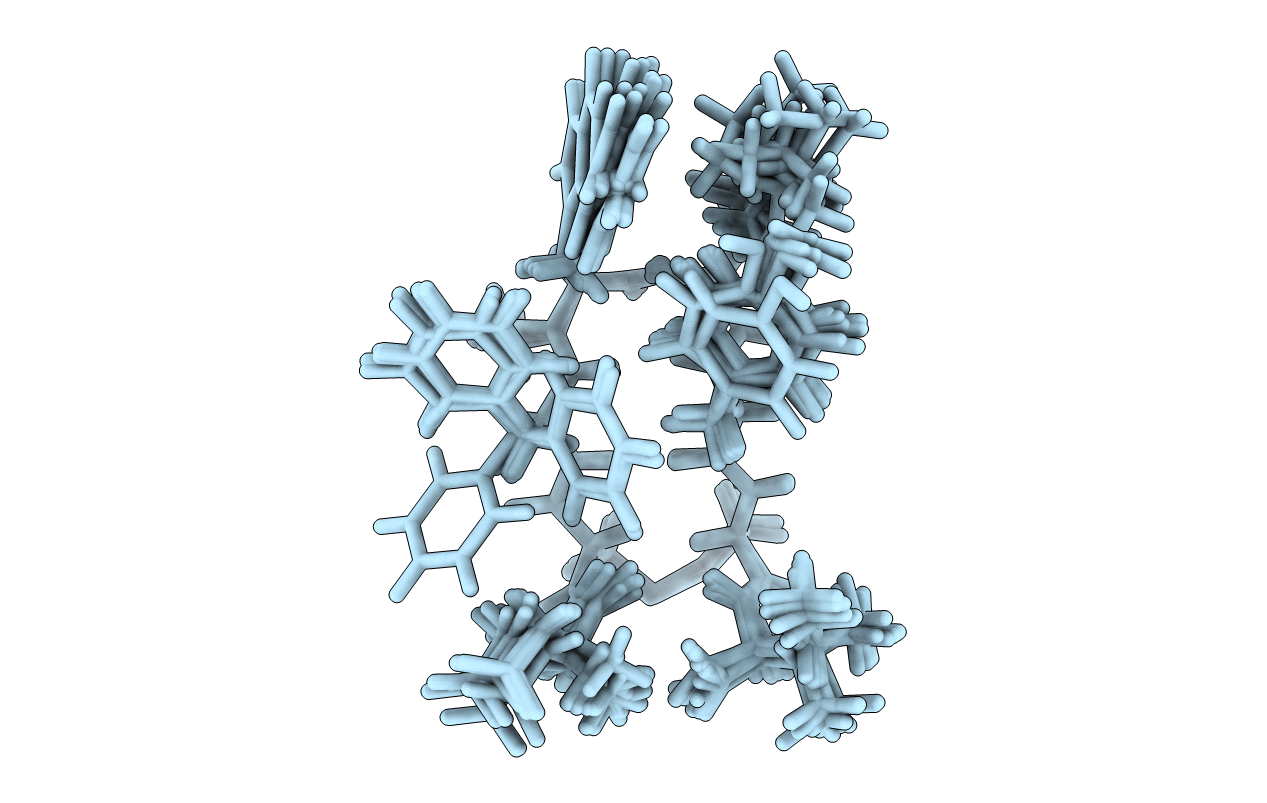
Deposition Date
2018-10-10
Release Date
2019-01-16
Last Version Date
2024-11-20
Entry Detail
PDB ID:
6HVB
Keywords:
Title:
NMR structure of Urotensin Peptide Asp-c[Cys-Phe-(N-Me)Trp-Lys-Tyr-Cys]-Val in SDS solution
Biological Source:
Source Organism:
Homo sapiens (Taxon ID: 9606)
Method Details:
Experimental Method:
Conformers Calculated:
100
Conformers Submitted:
10
Selection Criteria:
structures with the lowest energy


